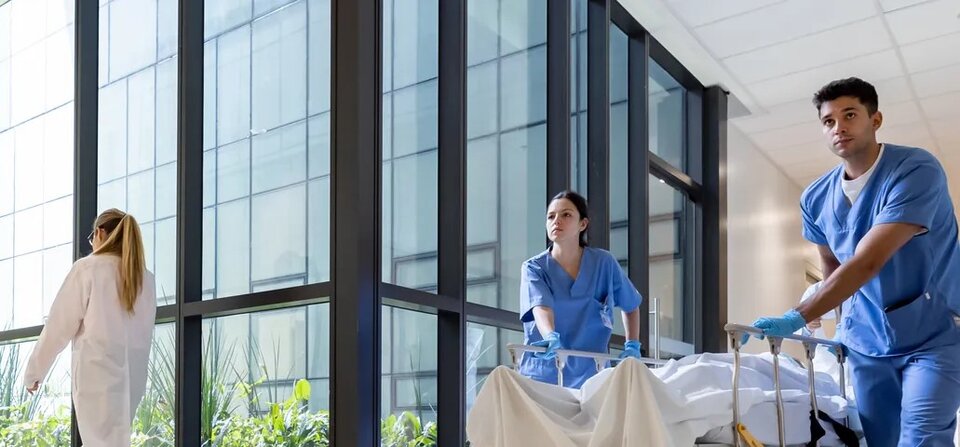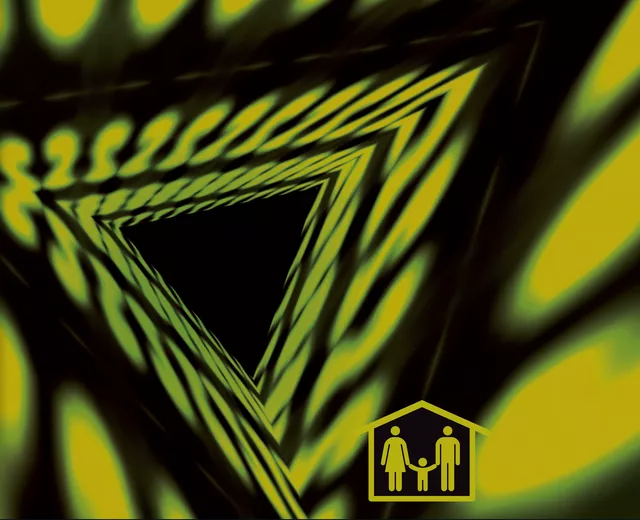Research
The Section Safety & Security Science studies socio-technical systems and the decision making processes on technical, human and organisational issues that take place in such systems, with an eye on challenges that may arise for the values of safety and security.
Section research themes
Our work is grounded in analysing possible scenarios and conditions leading to incidents, and by probabilistic assessments of cause-consequence relationships of interdependent events and their societal impact, taking into account people, technology and organisation / management. Research in our section is organized in the following 5 themes:
-
This theme includes probability analysis, data analytics, QRA, BBN, uncertainty analysis, sensitivity analysis, safety chain (proaction, prevention, repression), fault tree -, event tree -, attack tree -, decision tree analysis, game theory, inspection strategies and – optimization, penetration testing, stakeholder analysis, risk norms, risk optimisation, risk compensation, accident investigation, forensic engineering, resilience – and vulnerability analysis.
-
This theme includes research on on rational versus irrational human behaviour, behavioral and organizational psychology, cognitive bias, cultural bias, exogenous versus endogenous human error, omission errors, execution errors, recovery errors, safety management systems, organisational safety, safety maturity ladder, safety culture survey, respect / performance management.
-
Under this theme, we investigate trade-offs between safety and security, but also between safety, security and other societal or ethical values, such as privacy, economic costs, durability, etc.
-
In this theme we focus on new threats and new technologies with a possible impact on safety and security, including urbanization, ageing, budget cuts, climate change, robotics, remote sensing, digitization, internet of things, social media, and artificial intelligence.
-
This theme includes research on risk perception, risk coordination, risk visualisation, risk maps, alert systems, social media, communication planning, incident investigation processes, learning from risks and crises, and risk response .
-
This theme includes probability analysis, data analytics, QRA, BBN, uncertainty analysis, sensitivity analysis, safety chain (proaction, prevention, repression), fault tree -, event tree -, attack tree -, decision tree analysis, game theory, inspection strategies and – optimization, penetration testing, stakeholder analysis, risk norms, risk optimisation, risk compensation, accident investigation, forensic engineering, resilience – and vulnerability analysis.
-
This theme includes research on on rational versus irrational human behaviour, behavioral and organizational psychology, cognitive bias, cultural bias, exogenous versus endogenous human error, omission errors, execution errors, recovery errors, safety management systems, organisational safety, safety maturity ladder, safety culture survey, respect / performance management.
-
Under this theme, we investigate trade-offs between safety and security, but also between safety, security and other societal or ethical values, such as privacy, economic costs, durability, etc.
-
In this theme we focus on new threats and new technologies with a possible impact on safety and security, including urbanization, ageing, budget cuts, climate change, robotics, remote sensing, digitization, internet of things, social media, and artificial intelligence.
-
This theme includes research on risk perception, risk coordination, risk visualisation, risk maps, alert systems, social media, communication planning, incident investigation processes, learning from risks and crises, and risk response .
Application domains
We work on safety and security in a wide variety of domains, in collaboration with domain-specific experts from other TU Delft faculties:
- Digital society
- Health & care
- Industry
- Natural hazards
- Public space
- Transport
Because we study safety and security from a generic perspective, we can provide a transcendental and reflective look at applied safety research in specific domains. Our section provides for generic approaches, frameworks, models and methods concerning risk, safety and security issues.
Our approach
As was already mentioned, our approach is based on
- analysing possible scenarios and conditions leading to incidents, and
- probabilistic assessments of cause-consequence relationships of interdependent events and their societal impact.
We do this by a:
- system-of-systems approach, by decomposing systems into components and establishing relationships between these components (fault trees, decision trees, Bowties, BBNs),
- data analytics approach, by modelling data probabilistically,
- risk management approach, by structuring risks into probability - and consequence estimation of undesirable events, an analysis of inherent and epistemological uncertainties and optimization and standardization of safety – and security measures.
In (i), (ii) and (iii) we involve the three main factors that influence safety and security: people, technology and organization / management.
In particular we focus on developing safety and security science methodologies from descriptive to creative, from the "after-the-fact" to the anticipatory. Special attention is given to Bayesian Belief Network Modelling for probabilistic cause-consequence relationships.
Based on this research, proactive and reactive measures can be developed to improve safety and security levels while also respecting conflicting values and uncertainties.
Section research themes
Our work is grounded in analysing possible scenarios and conditions leading to incidents, and by probabilistic assessments of cause-consequence relationships of interdependent events and their societal impact, taking into account people, technology and organisation / management. Research in our section is organized in the following 5 themes:
-
This theme includes probability analysis, data analytics, QRA, BBN, uncertainty analysis, sensitivity analysis, safety chain (proaction, prevention, repression), fault tree -, event tree -, attack tree -, decision tree analysis, game theory, inspection strategies and – optimization, penetration testing, stakeholder analysis, risk norms, risk optimisation, risk compensation, accident investigation, forensic engineering, resilience – and vulnerability analysis.
-
This theme includes research on on rational versus irrational human behaviour, behavioral and organizational psychology, cognitive bias, cultural bias, exogenous versus endogenous human error, omission errors, execution errors, recovery errors, safety management systems, organisational safety, safety maturity ladder, safety culture survey, respect / performance management.
-
Under this theme, we investigate trade-offs between safety and security, but also between safety, security and other societal or ethical values, such as privacy, economic costs, durability, etc.
-
In this theme we focus on new threats and new technologies with a possible impact on safety and security, including urbanization, ageing, budget cuts, climate change, robotics, remote sensing, digitization, internet of things, social media, and artificial intelligence.
-
This theme includes research on risk perception, risk coordination, risk visualisation, risk maps, alert systems, social media, communication planning, incident investigation processes, learning from risks and crises, and risk response .
Application domains
We work on safety and security in a wide variety of domains, in collaboration with domain-specific experts from other TU Delft faculties:
- Digital society
- Health & care
- Industry
- Natural hazards
- Public space
- Transport
Because we study safety and security from a generic perspective, we can provide a transcendental and reflective look at applied safety research in specific domains. Our section provides for generic approaches, frameworks, models and methods concerning risk, safety and security issues.
More on our focus and approach
As was already mentioned, our approach is based on
- analysing possible scenarios and conditions leading to incidents, and
- probabilistic assessments of cause-consequence relationships of interdependent events and their societal impact.
We do this by a:
- system-of-systems approach, by decomposing systems into components and establishing relationships between these components (fault trees, decision trees, Bowties, BBNs),
- data analytics approach, by modelling data probabilistically,
- risk management approach, by structuring risks into probability - and consequence estimation of undesirable events, an analysis of inherent and epistemological uncertainties and optimization and standardization of safety – and security measures.
In (i), (ii) and (iii) we involve the three main factors that influence safety and security: people, technology and organization / management.
In particular we focus on developing safety and security science methodologies from descriptive to creative, from the "after-the-fact" to the anticipatory. Special attention is given to Bayesian Belief Network Modelling for probabilistic cause-consequence relationships.
Based on this research, proactive and reactive measures can be developed to improve safety and security levels while also respecting conflicting values and uncertainties.
Our work on safety in health care is concentrated in a dedicated centre:

The Centre for Safety in Healthcare has been established in 2020 with the aim to investigate and promote a safety culture in the context of the highly socio-technical environment of healthcare. It looks at both human behaviour at the core of creating and maintaining a safe environment, and a safe environment at the core of learning, growth and progress.
Examples of our work
Examples of our work
Department research themes
Our section contributes to three main research themes that intersect the whole Department of Values, Technology & Innovation, all related to responsible innovation. Within these three themes, our focal point is responsible risk management, a key concern when it comes to responsible innovation. The effects of innovation are uncertain and often may only surface once technologies are employed. This raises the question of how to analyse, model, predict and manage risks, taking into account technological, organisational and human factors as well as ethical considerations.
The Section of Safety & Security Science (3S) is the focal point of the department's research on Responsible Risk Management. The aim is to develop approaches for proactive and reactive measures to improve safety and security levels while respecting other conflicting values and uncertainties.
-
Our section contributes to Design for Values with a particular focus on the value of safety, which is called the Safe-by-Design approach. Differences, commonalities, and possibilities for mutual learning found in various practices have been identified, and several ways of putting these disciplinary outlooks into perspective have been elaborated on.
The Section Safety & Security Science (3S) contributes to Design for Values with a particular focus on the value of safety, which is called the 'Safe by Design' approach. Differences, commonalities, and possibilities for mutual learning found in various practices have been identified, and several ways of putting these disciplinary outlooks into perspective have been elaborated on.
-
Our section also contributes to the research theme of the management of responsible innovation. Human behaviour is at the core of creating and maintaining a safe environment. And vice versa, a safe environment is at the core of learning, growth and progress. Both elements are elemental to a safety culture that is also known to contribute to optimal team performance.
The Section Safety & Security Science also contributes to the research theme of the management of responsible innovation. Human behaviour is at the core of creating and maintaining a safe environment. And vice versa, a safe environment is at the core of learning, growth and progress. Both elements are elemental to a safety culture that is also known to contribute to optimal team performance.
-
Our section is the focal point of this research theme. The aim is to develop approaches for proactive and reactive measures to improve safety and security levels while respecting other conflicting values and uncertainties.







